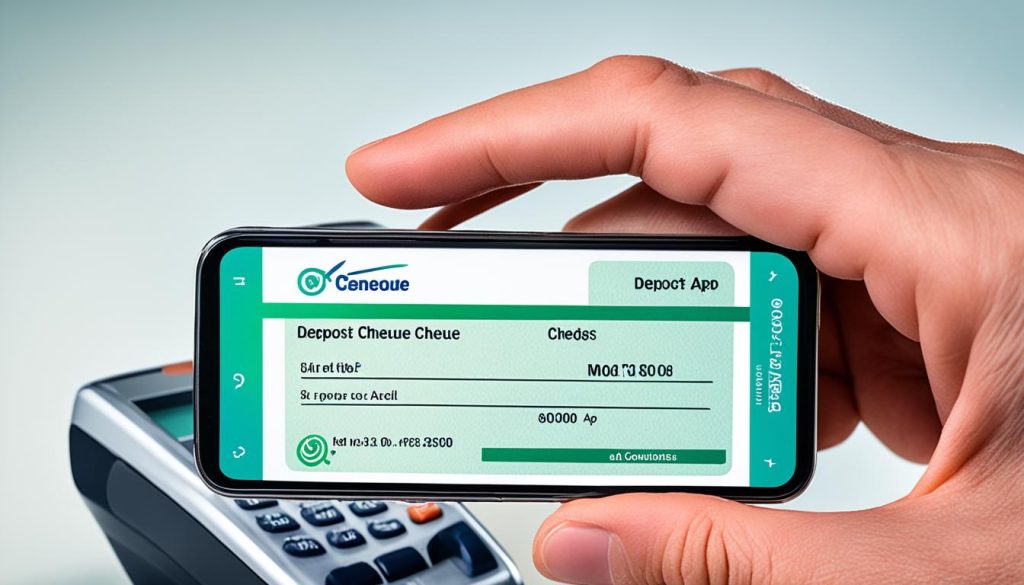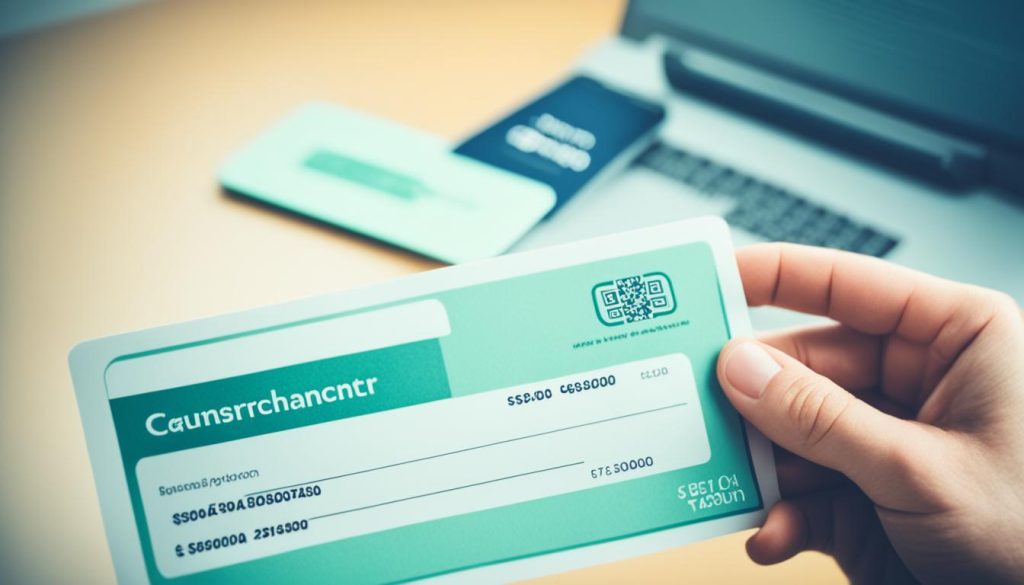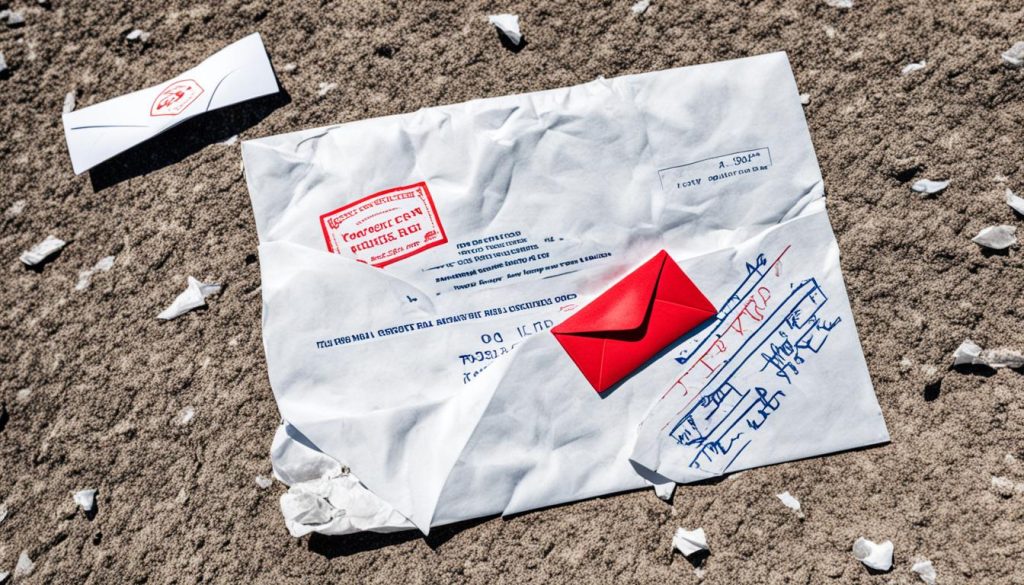Are you puzzled about how to pay in a cheque? In today’s digital age, cheque usage might seem outdated, but it’s still a common method of payment in the UK. Whether you’re receiving a cheque as payment or need to deposit one, understanding the process is essential.
In this comprehensive guide, we’ll walk you through the steps of paying in a cheque, from endorsing it correctly to depositing it into your bank account. We’ll also cover the various methods available, including in-branch deposits, ATM deposits, and mobile banking options.
By the end of this article, you’ll have a clear understanding of how to pay in a cheque efficiently and securely, ensuring you receive your funds without any hassle. Let’s dive in!
How to Pay in a Cheque?
Paying in a Cheque with the Mobile App
If you prefer the convenience of mobile banking, you can easily deposit a cheque using your bank’s mobile app. Follow these simple steps to complete your mobile cheque deposit:
- Login to your mobile app using your credentials.
- Select the account where you want to deposit the cheque.
- Look for the option that says “Deposit a cheque” and tap on it.
- Enter the amount written on the cheque and continue.
- Place the cheque on a dark background and use your device’s camera to capture images of the front and back of the cheque.
- Verify all the details on the summary screen and click “Deposit now” to finalize the transaction.
It’s crucial to remember that if you submit your cheque on a bank holiday, it will be processed on the following business day. Typically, the funds should be available in your account within two business days of the deposit.
Depositing a cheque with your mobile app provides a convenient and efficient way to manage your finances. The process is user-friendly, allowing you to complete your transaction from the comfort of your own home or wherever you may be.

By following these step-by-step instructions, you can easily deposit a cheque using your bank’s mobile app.
Deposit Cheques with Bankline Mobile
Bankline Mobile, as mentioned in the first source, is a feature for NatWest Bankline customers to deposit cheques. With Bankline Mobile, you can conveniently deposit cheques using your mobile device. Here are the steps provided by the first source for depositing cheques with Bankline Mobile:
- Login to the Bankline Mobile app.
- Select the “Pay” tab.
- Choose “Deposit a cheque”.
- Select the account for the cheque deposit.
- Enter the cheque amount.
- Use the camera to take photos of the front and back of the cheque.
- Review the details on the summary screen and select “Deposit now”.
It’s important to note that usual cheque tariffs will apply for each cheque deposited with Bankline Mobile. The app provides a secure and efficient way to deposit cheques, saving you time and effort.

Deposit Cheques with Bankline Mobile
Bankline Mobile, as mentioned in the first source, is a feature for NatWest Bankline customers to conveniently deposit cheques using their mobile devices. By utilizing Bankline Mobile, you can streamline the cheque deposit process and make handling your finances easier on the go.
Step-by-Step Guide to Depositing Cheques
To deposit your cheques with Bankline Mobile, simply follow these steps:
- Login to the Bankline Mobile app.
- Select the “Pay” tab.
- Choose “Deposit a cheque”.
- Select the account you want to deposit the cheque into.
- Enter the amount written on the cheque.
- Use your device’s camera to capture clear photos of both the front and back of the cheque.
- Review the details on the summary screen to ensure accuracy.
- Click “Deposit now” to complete the transaction.
By following these simple steps, you can make cheque deposits conveniently and securely with Bankline Mobile. Plus, it saves you the hassle of having to visit a physical branch or ATM.
Alternative Methods for Paying in a Cheque
If you prefer not to use the mobile app, there are alternative methods available for paying in a cheque.
In-Branch Deposits
If you choose to pay in your cheques at a branch, you will need to bring your card and the cheques you wish to deposit. Simply visit your bank’s branch and approach a teller. They will assist you in depositing the cheques into your account. This method is ideal for individuals who prefer face-to-face interactions and want the reassurance of handing over their cheques directly.
Post Office Deposits
Post offices also accept cheque and cash deposits. To deposit a cheque at a post office, you will need to fill out a paying-in slip with your account details and the cheque amount. Hand over the slip and cheque to the post office teller, who will process the deposit. This method provides convenience, especially if you have limited access to a branch or prefer utilizing the services of a post office.
Important Considerations
It’s worth noting that cheques can be paid into or written from your account for up to 6 months from the date on them. However, it is generally advised against writing future-dated cheques to avoid potential issues. Future-dated cheques may lead to complications, as they can only be cashed or deposited after the specified date. Additionally, it’s essential to ensure you have correctly filled out a deposit slip when making a cheque deposit at the post office or in-branch. Accurately completing the slip helps ensure a smooth and efficient deposit process.
Exploring alternative methods of paying in a cheque allows individuals to choose the option that suits their preferences and requirements. Whether you opt for in-branch deposits or utilize the services of a post office, the ability to pay in cheques using a traditional approach remains accessible. Take advantage of these alternative methods to ensure the seamless processing of your cheque deposits.

| Pros | Cons |
|---|---|
| Face-to-face interaction with a teller | Limited availability of branches or post offices |
| Reassurance of directly handing over cheques | Potential waiting time at branches or post offices |
| Access to additional banking services | Potential for incorrectly filled out deposit slips |
Processing and Clearance of Cheques
When it comes to processing and clearance of cheques, it’s important to understand the timelines and procedures involved. This section will provide you with valuable information regarding lost cheque deposit, stale cheque deposit, and how long it takes for a cheque to clear.
Cheque Submission and Processing Times
Cheques that are submitted through the mobile app are typically processed within 2 business days, as long as they are submitted before 6pm. If you’ve paid in cheques using the app and they have not yet cleared, they will be shown as pending transactions in your account. In case there are any issues with the cheques you’ve deposited, the bank will contact you.
It’s important to note that payments are not processed over weekends or bank holidays. Cheques submitted during those times will be processed on the next business day. This ensures that the funds from your cheques are available in a timely manner.
Validity of Cheques
According to the second source, cheques paid into or written from a Nationwide account are valid for up to 6 months from the date on them. After this period, you may need to request a new cheque from the issuer.
Lost Cheque and Stale Cheque Deposits
When it comes to lost cheque deposits, it is essential to report it to your bank immediately. They will guide you through the necessary steps to recover the funds and prevent unauthorized usage. Timely reporting will ensure that appropriate measures are taken to protect your finances.
A stale cheque deposit refers to a cheque that has exceeded the validity period of 6 months. In case you come across a stale cheque, you may need to contact the issuer and request a new cheque to complete the transaction successfully.
To summarize, cheques submitted through the mobile app should be processed within 2 business days, as long as they are submitted before 6pm. Payments are not processed over weekends or bank holidays, which means any cheques submitted during those times will be processed on the next business day. Additionally, cheques paid into or written from a Nationwide account are valid for up to 6 months. Lost cheque deposits should be reported immediately, while stale cheques may require obtaining a new cheque from the issuer.
| Key Points | Details |
|---|---|
| Cheque Processing Times | Cheques submitted through the mobile app are processed within 2 business days. |
| Pending Transactions | Cheques that have not yet cleared will be shown as pending transactions in your account. |
| Weekends and Bank Holidays | Payments are not processed over weekends and bank holidays. |
| Cheque Validity | Cheques paid into or written from a Nationwide account are valid for up to 6 months. |
| Lost Cheque Deposits | Lost cheques should be reported to the bank immediately to prevent unauthorized usage. |
| Stale Cheque Deposits | If you come across a stale cheque, you may need to request a new cheque from the issuer. |

Conclusion
Paying in a cheque and cashing a cheque are two different processes when it comes to handling this traditional form of payment. When you pay in a cheque, you are depositing it into your own bank account. This can be done conveniently using mobile banking apps like the NatWest app or Bankline Mobile app, where you can simply take a photo of the cheque and submit it for processing.
On the other hand, cashing a cheque refers to converting the cheque into physical cash. This is typically done by visiting a branch of the issuing bank or a cheque cashing service. However, with the rise of digital transactions, many people now prefer the convenience of directly depositing cheques into their accounts instead of cashing them.
To pay a cheque into your account, you have multiple options. Mobile banking apps allow for quick and efficient cheque deposits by taking photos of the front and back of the cheque. Alternatively, you can still visit branches or post offices to pay in your cheques if you prefer traditional methods. It’s important to pay the cheques into your account within the valid timeframe, usually 6 months from the date on them, to avoid potential issues with the bank or building society refusing the deposit.
Understanding the processing and clearance times for cheques is essential to managing your expectations. Cheques submitted through the mobile app are typically processed within 2 business days, while cheques deposited at branches or post offices may take longer. It’s important to note that funds will not be available immediately, and there may be further verification steps for large sums.

